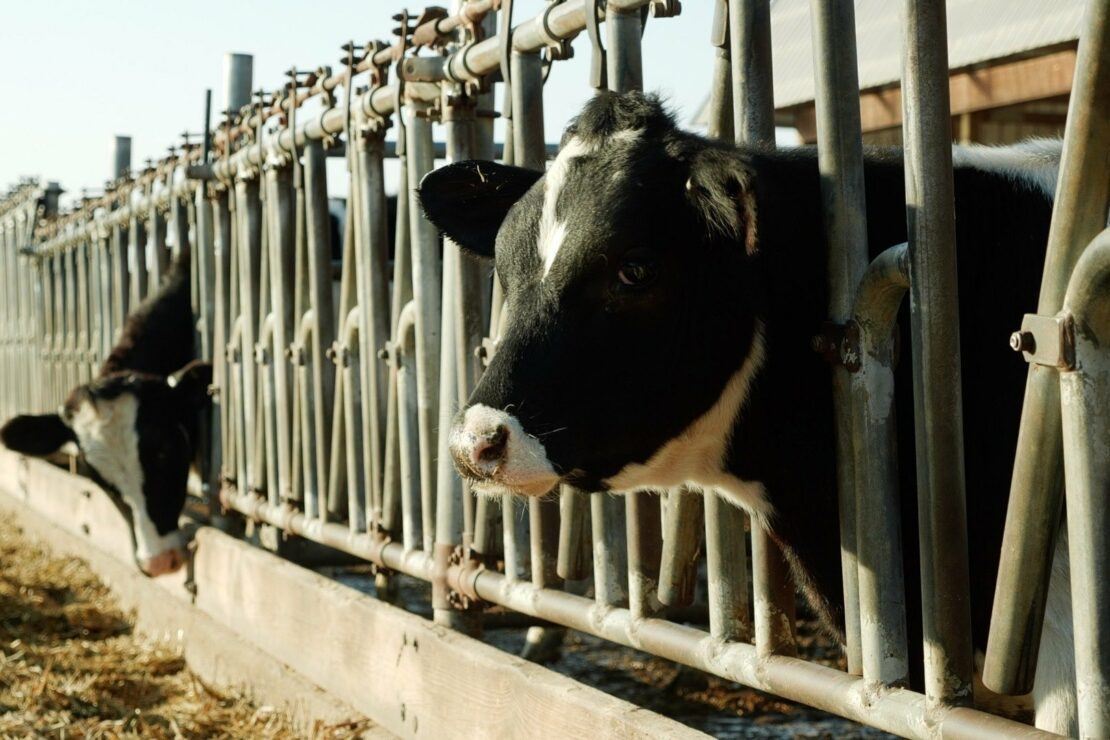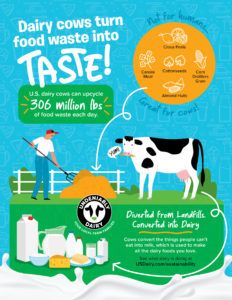Member of the Month: Midwest Dairy

June is National Dairy Month and Midwest Dairy is a key partner in our work with the Headwaters Agriculture Sustainability Partnership which is focused on delivering solutions to benefit the environment, economic viability of farmers, and vitality of rural communities. Midwest Dairy is also part of a larger movement. Food commodities, like dairy, are leveraging the opportunity to meet the nutritional demands of a growing and dynamic population not only in the United States but around the world while continuing to reduce environmental impacts.
Currently, the U.S. dairy community supplies the protein requirements of 169 million people, calcium requirements of 254 million people, and energy requirements of 71.2 million people. Dairy products, ranging from milk and cheese to yogurt and kefir (and so much more), meet the multiple taste, cultural and individual needs to support the health, well-being and prosperity that every person has the right to and deserves.
At a time when affordable and sustainable nutrition has never been more important to our world, dairy works as a solution to food and nutrition security due to its unique and irreplaceable nutritional makeup.
“Dairy is a delicious source of essential nutrition available in many forms to suit the needs of most people,” says Joanne Slavin, PhD, RDN, Professor, Department of Food Science and Nutrition, at the University of Minnesota – Twin Cities. Dr. Slavin is also a farmer, and a member of the 2010 Dietary Guidelines for Americans Advisory Council (DGAC). She continues, “The dairy food group supports health and well-being due to its nutrient-rich package, providing 13 essentials nutrients like high-quality protein, calcium, and vitamin D. Healthy eating patterns, which include milk, cheese, and yogurt are linked to reduced risk of certain chronic disease, like lower risk for cardiovascular disease and Type 2 diabetes among adults. In addition, research has also linked dairy consumption to improved bone health, especially in children and adolescents.”
All eyes are on the environmental impact of agriculture, and this holds true for dairy. The production of dairy contributes to a natural nutrient cycle, integrating the nourishment of people, animals, and land. Humans are only part of this cycle. Although we tend to hyper-focus on our short-term needs, our world – all people, animals, and land – is inherently holistic. Animal care is human care. Additionally, restorative practices that enhance natural resources and ecosystems ensure that our land can continue to support humans and animals in the long term.
That’s why the dairy community has dedicated its support to sustainability. Farmers have supported research and information-sharing that goes into more sustainable practices without sacrificing the quality of the commodity. US Dairy has committed to carbon neutrality by 2050 via the Net Zero Initiative (NZI), which also includes GHG neutrality, improved water use and quality, and tapping into unrealized solutions to become more self-sustaining on the farm.

To best feed people, locally and worldwide, dairy farmers provide their cows with a highly nutritious feed, often utilizing food byproducts and waste. About 80% of a cow’s diet is made up of food humans can’t eat, like citrus peals, almond husks, cottonseed, and brewer’s grains. One cow eats up to 48 pounds of upcycled food waste a day; U.S. dairy cows consume 204-306 million pounds of byproducts and food waste each day.
According to the USDA, food waste is estimated at between 30-40% of the U.S. food supply. More often than not, this waste ends up in landfills. Throwing food into a landfill is like tying food in a plastic bag. The nutrients in the food never return to the soil and release methane into the atmosphere, accounting for 6-8% of greenhouse gas emissions in the U.S. Composting on an individual level is a step in the right direction for all, but when dairy farmers and cows fight food waste, they can do so on a massive scale.
If you were to eliminate dairy cows to reduce emissions, you would also be eliminating a great source of accessible, affordable and nutrient-rich dairy foods. At a time when supply chain issues and shortages have left consumers with fewer options, removing dairy is counterproductive to sustainable nutrition as Americans get more than half of their calcium and vitamin D from milk, cheese and yogurt. Different researchers found that it is not a simple task to obtain essential nutrients found in milk from another single food source, or even many foods, without increasing daily calories—and cost.
Bottom line: The dairy industry is a key part of the solution to the sustainable nutrition challenge—that is, the dual need to ensure food security and nutrition for a fast-growing global population while reducing the environmental impacts of agriculture. Dairy foods are nutrient-rich and accessible, and farmers are committed to responsible and sustainable production.